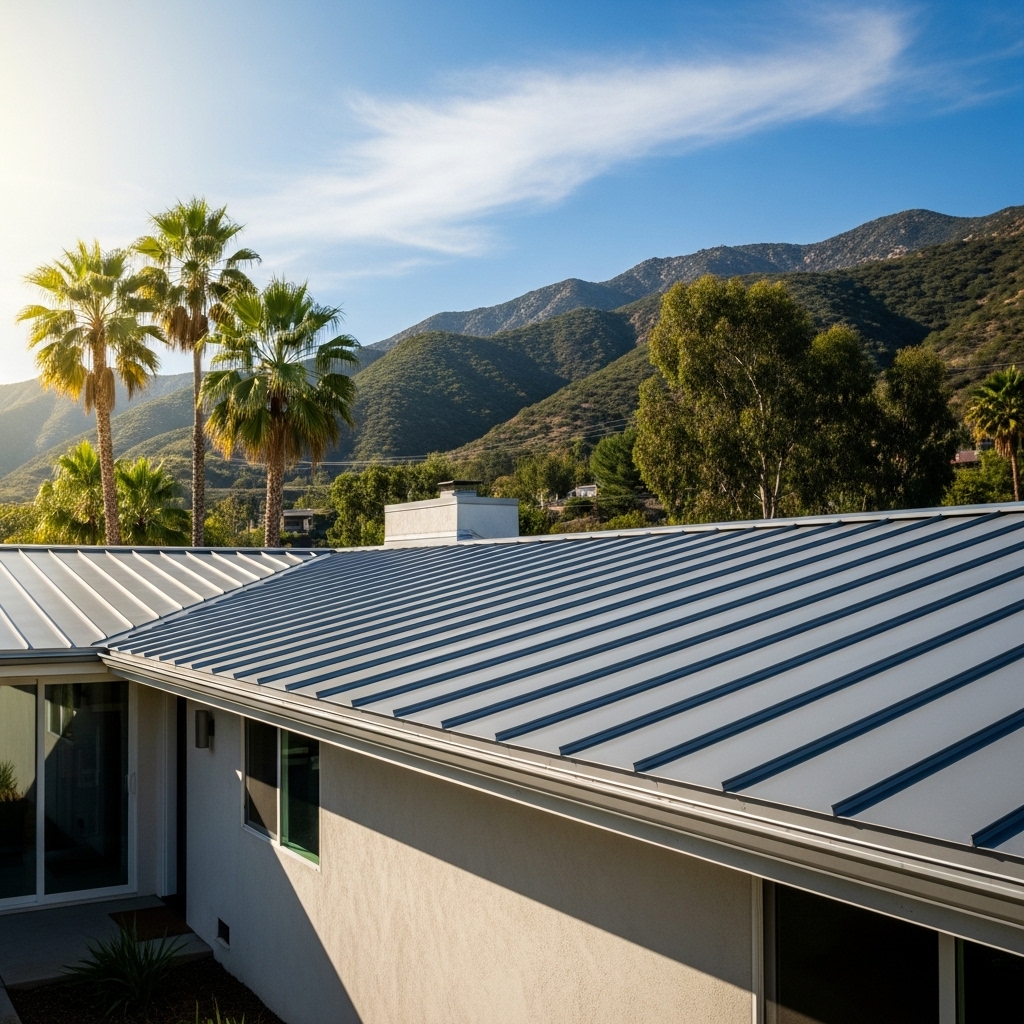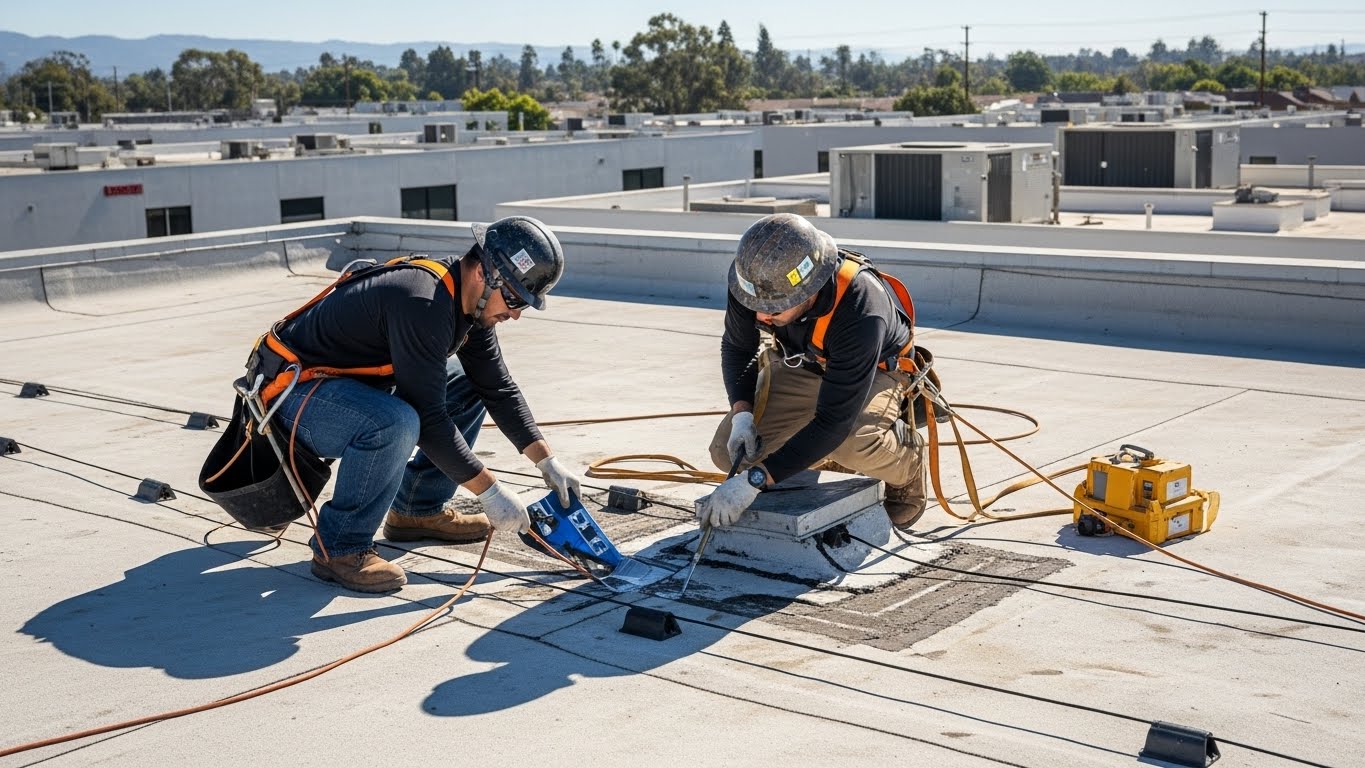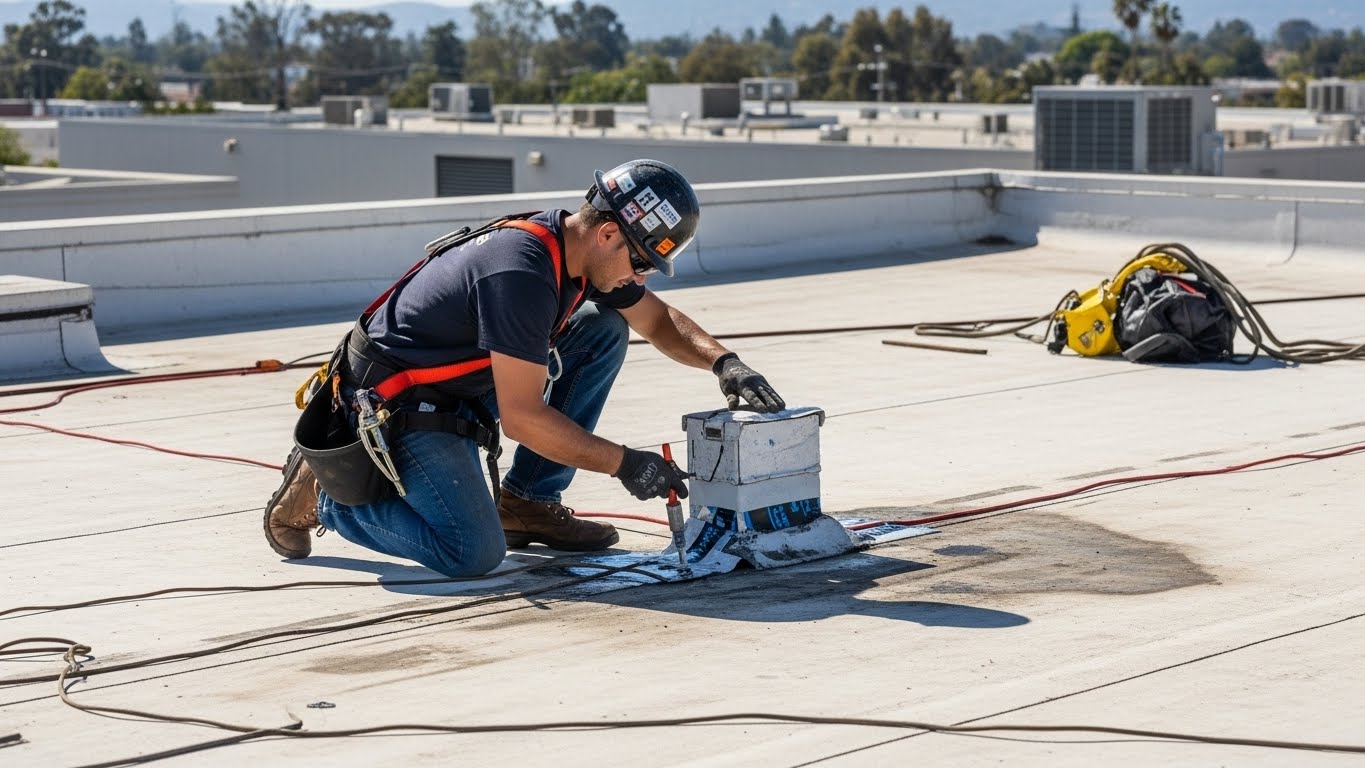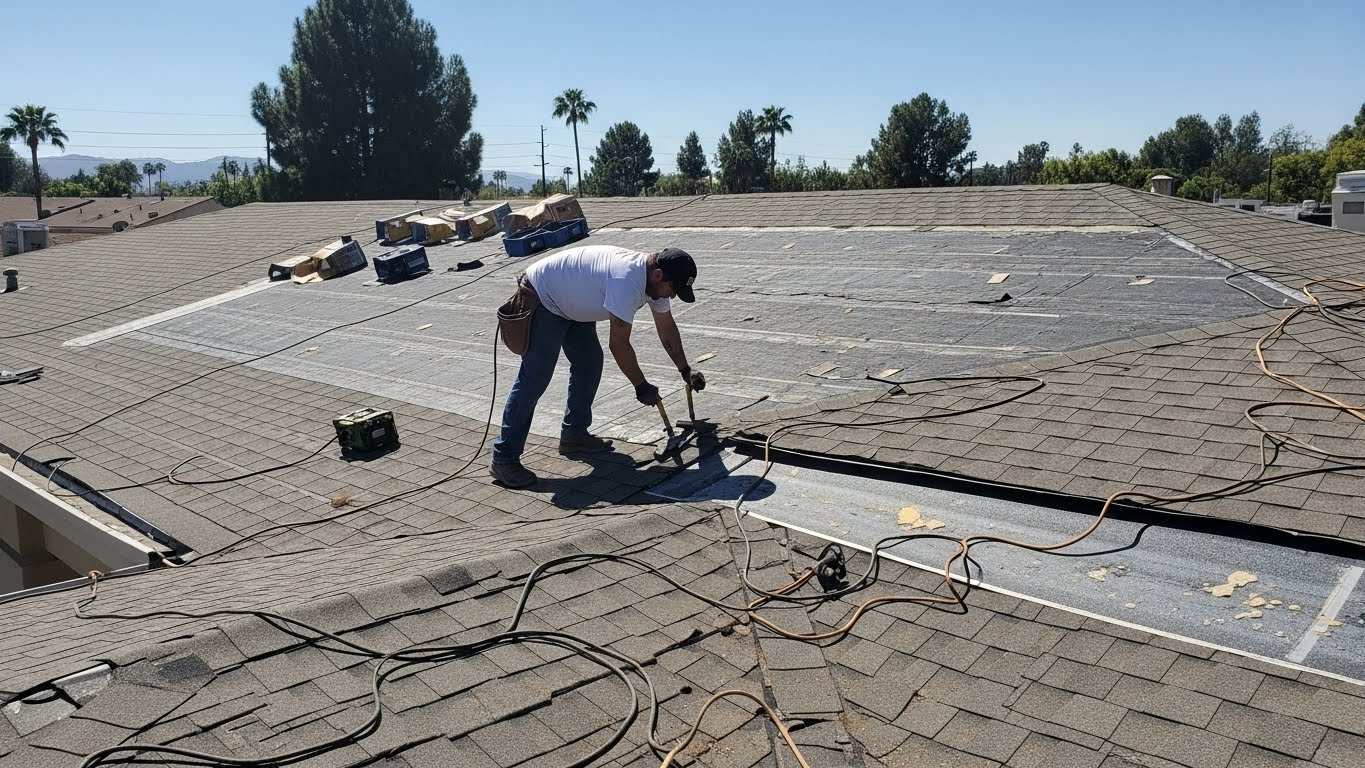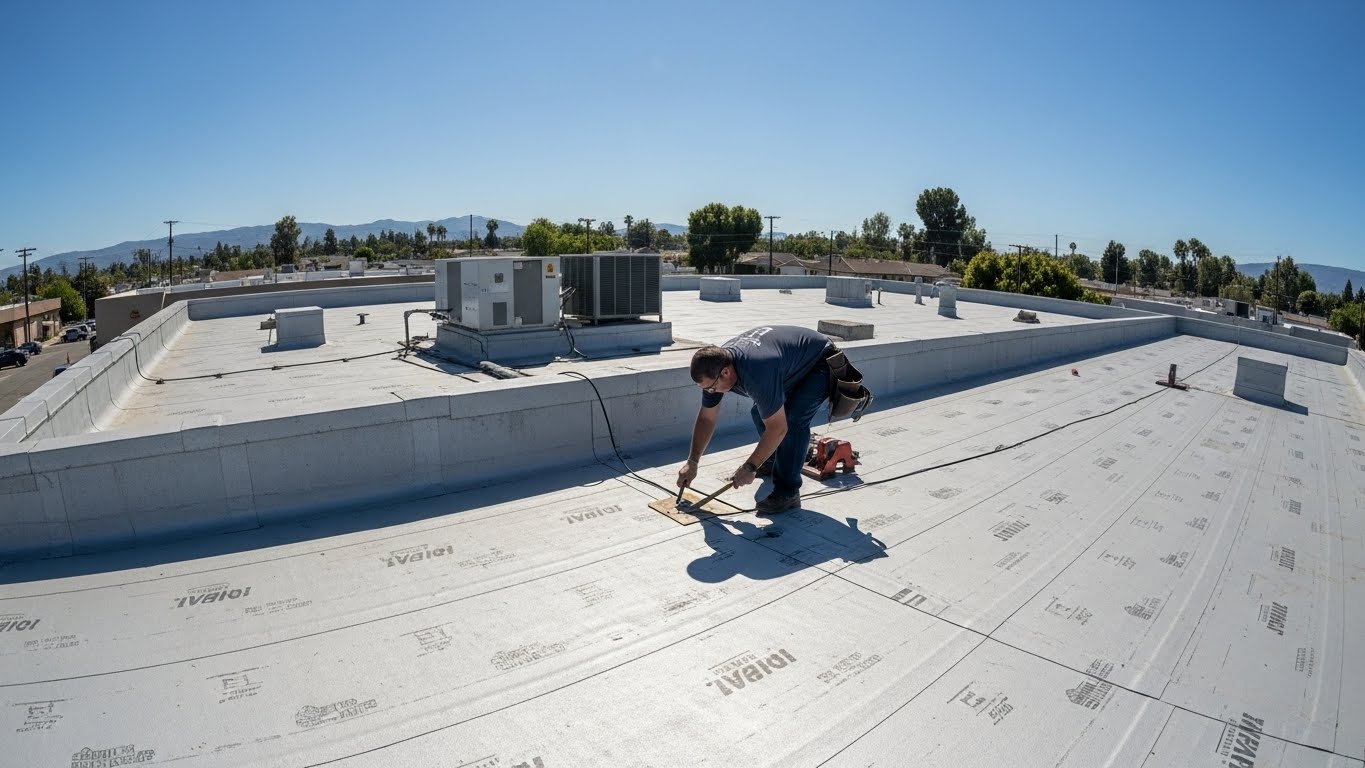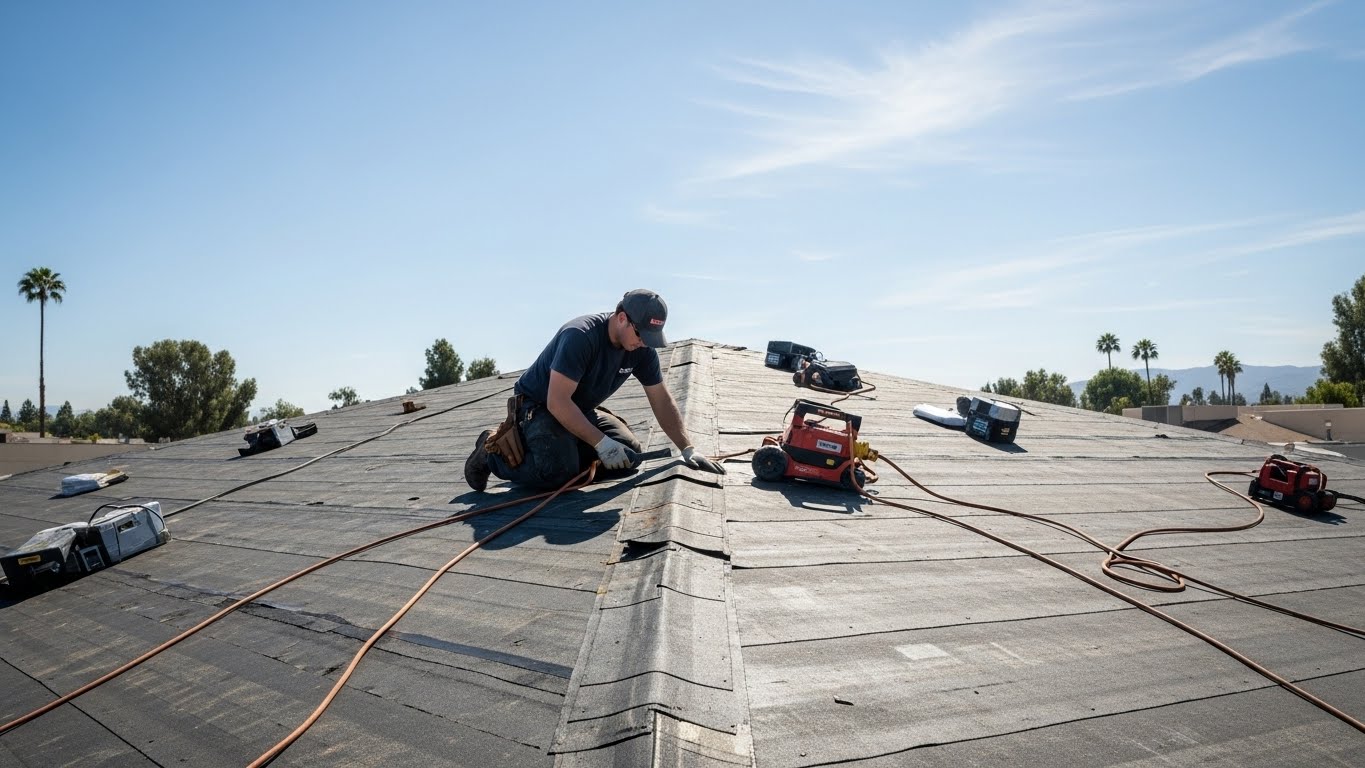Welcome to Tarzana’s Metal Roof Advantage
Living in Tarzana means embracing sunshine-soaked days, quick swings from cool mornings to hot afternoons, and the occasional jolt of Santa Ana winds that sweep across the Valley. In this environment, homeowners quickly learn that the right roof is more than a cap on the house—it is a comfort system, a safeguard, and a long-term investment that influences energy bills, safety, and resale value. That is precisely why so many neighbors are considering metal roofing as a smart upgrade. Beyond the sleek look you see on modern remodels and reimagined mid-century homes, there are tangible, day-to-day benefits that make metal an especially good fit for Tarzana.
Over the years, I have watched properties near Ventura Boulevard, the hillside streets off Reseda, and the quiet cul-de-sacs nearer to the 101 adopt metal roofs for reasons that go far beyond style. The material’s performance under heat, wind, and wildfire risks pairs well with local building codes, and the light weight helps older structures without heavy seismic retrofits. Whether your home is a stucco Spanish revival craving tile-like texture or a clean-lined ranch yearning for crisp standing seams, the advantages show up across aesthetics, efficiency, and durability—qualities that matter in our microclimate and our market.
Durability That Outlasts the Weather
When Tarzana’s summer sun bears down, roofing materials are stressed hour after hour. Asphalt shingles can get brittle, curl, and shed granules, leading to early replacement. By contrast, quality metal panels resist the UV punishment that defines our long dry season. Properly installed and maintained, a metal roof can perform for decades, staying structurally sound and weather-tight long after other materials begin to tire. That longevity does not just bring peace of mind; it reduces the disruption of frequent tear-offs and the waste stream that comes with them, which is an environmental advantage in its own right.
Durability is not only about time; it is also about event-based performance. Tarzana occasionally sees intense downpours, especially in El Niño years, and short bursts of heavy rain reveal weaknesses in flashing, valleys, and penetrations. Metal roofs, with interlocking panels and well-detailed seams, are particularly adept at shedding water quickly and channeling it into gutters. When combined with high-temperature underlayment—a must on our hot rooftops—you gain a layered defense that holds up when the clouds finally open.
Fire Resistance in a Wildland-Urban Interface
Tarzana sits at the edge of high-fire zones, and ember exposure remains a concern during the peak of Santa Ana season. A roof that resists ignition is one of the best defenses a homeowner can invest in. Most residential metal systems carry a Class A fire rating when installed over appropriate underlayment, providing an important layer of protection against wind-driven embers. The absence of combustible surface material means fewer vulnerable points on the roof plane itself, and the smooth profile of many systems makes it harder for embers to lodge and smolder.
Fire-hardening your home is a holistic effort—clearing gutters, screening vents, and managing vegetation are all vital steps—but the roof is a big piece of the puzzle. Choosing a metal system with closed ridges, ember-resistant venting, and well-sealed edges tightens the building envelope in ways that matter when the winds pick up. Homeowners often tell me that this fire-resilient feeling alone made metal worth it.
Energy Efficiency and Cooler Interiors
One of the more immediate benefits homeowners notice after switching to metal is the shift in indoor comfort. Reflective finishes, especially those labeled as “cool roof” colors, bounce a significant portion of solar heat away from the home. On a Tarzana afternoon when heat radiates from every driveway and wall, this reflectance counters the urban heat island effect and lets your attic run cooler. With proper attic ventilation, the combo of a reflective roof and steady airflow can reduce strain on your HVAC system, which often translates into steadier indoor temperatures and more breathable evenings.
There is a misconception that a metal roof will make a house hotter, but it actually works the opposite way when paired with the right finish and assembly. High-performing coatings, often polymer-based, are engineered to reflect infrared radiation. Under the surface, quality underlayment and airspace in certain assemblies help limit conductive heat transfer into living spaces. The net effect is a home that stays more comfortable through our long dry season without the AC fighting as hard.
Lightweight Strength and Seismic Sensibility
Weight matters in Southern California, not only for aging framing but also for seismic considerations. Metal is one of the lightest long-term roofing options, which reduces dead load on rafters and trusses. If your home was built decades ago and you have done only modest structural upgrades, this lighter load can be a practical advantage. It often makes re-roof projects smoother, sometimes allowing installation over existing shingles where codes and conditions permit, thereby cutting down on tear-off debris and construction disruption.
In a region where we prepare for the occasional shake, a lighter roof also means less inertial force acting on the structure during seismic events. While no roofing material is a seismic retrofit by itself, everything that eases stress on the frame contributes to a more resilient home. Metal does this elegantly, matching strength with low weight in ways that few other materials can.
Wind Performance When Santa Anas Roar
Tarzana’s Santa Ana winds can be fierce, tunneling through corridors and testing the edges of every roof. Modern metal systems use interlocking panels and concealed fasteners designed to resist uplift. Properly specified clips and fastening patterns, verified by engineering data, help the roof stay anchored when gusts press and pull. Homeowners on ridgelines and west-facing slopes, who often feel the winds most, appreciate this secure attachment, especially when paired with well-designed eave details and tight ridge caps that reduce the chance of wind-driven rain intrusion.
Good wind performance is not just about the panels. It is also about how the roof meets the edges of the building—starter strips, drip edges, fascia transitions, and penetrations around skylights and plumbing vents. A well-trained crew pays attention to these transitions, and that craftsmanship shows when the first wind event arrives after installation.
Design Versatility for Tarzana’s Architectural Mix
Walk any Tarzana block and you will see a blend of architectural styles: mid-century ranches with long, low lines; Spanish-inspired homes with arched entries; contemporary remodels with crisp geometry; and hillside properties that demand panoramic flair. Metal roofing adapts to each identity. Standing seam suits modern and transitional homes, delivering a tailored silhouette. Stone-coated steel mimics the warmth of traditional tiles without the weight. Textured finishes soften reflections in sunny backyards, while matte cool-roof colors provide a sophisticated, California-friendly palette that keeps temperatures in check.
This design flexibility is more than surface deep. Pitch variations, curved roof sections, and complex intersections can be handled with the right system and crew, yielding a roof that looks custom because it is. For homeowners who have struggled to reconcile aesthetics with performance, metal offers a way to have both without compromise.
Sustainability and Recyclability
Another key benefit is sustainability. Many metal roofing alloys contain recycled content, and at end of life the material is fully recyclable, which dramatically reduces landfill burden compared to tear-offs of composite shingles. The long service life means fewer replacements across the decades, and the energy efficiency of cool finishes supports lower cooling loads during the hottest months. For Tarzana households trying to shrink their environmental footprint, metal becomes part of a broader sustainability strategy that might also include native landscaping, smart irrigation, and efficient HVAC.
Even day-to-day care leans green. Metal sheds dust readily, reducing the need for heavy-duty cleaning; periodic rinses and gentle maintenance keep finishes looking fresh. Finish warranties add confidence that color and reflectivity will hold up, extending the environmental wins over time.
Solar Readiness Without Extra Fuss
Solar adoption continues to grow across the Valley, and metal roofing pairs beautifully with photovoltaic systems. Standing seam panels, in particular, make it easier to mount solar arrays using clamp systems that avoid penetrating the panel surface. That means fewer opportunities for leaks and a cleaner integration of panels with the roof aesthetic. Homeowners planning solar in the next few years often choose metal now so that the energy system can be attached securely without compromising the weatherproofing later.
Coordination between roofing and solar contractors is important. When timed right, the two trades share measurements, discuss panel layout, and plan wire penetrations so that everything is flashed perfectly. The result is a roof that not only supports solar but showcases it as a seamless part of the home’s design.
Quiet, Comfortable Living
It is completely understandable to wonder about noise, especially for those who grew up with the sound of rain on metal barns or industrial buildings. Residential metal roofs are different. They sit atop solid decking with underlayment and attic insulation, and in many assemblies there is an air gap that further dampens sound. In our climate, where true rainstorms tend to come in brief, dramatic episodes rather than days-long deluges, most homeowners are pleasantly surprised by how quiet the interior remains.
Moreover, Tarzana’s dominant noise challenges are usually external—traffic hum, leaf blowers, and the occasional helicopter—rather than rain. The roof assembly, combined with double-pane windows and insulated walls, contributes to a calm interior that lets you enjoy the soft evening breezes without distraction.
Home Value and Curb Appeal
Because metal roofing communicates longevity and low maintenance, it often enhances perceived home value. Buyers notice the crisp lines, the enduring finish, and the promise of a roof that will not need a major intervention anytime soon. For homeowners planning to stay, the everyday pleasure of a well-detailed roof is its own return—no curling shingles to spoil the view, no patchwork repairs after every high-wind advisory.
In neighborhoods where remodels are common, a metal roof can also set the tone for the rest of a project. It frames exterior paint choices, informs window trim, and complements landscape design, all while signaling that the home is tuned for our climate and ready for the next few decades.
Local Codes, Best Practices, and Materials
Meeting local requirements is part of the job. In Los Angeles, Title 24 energy standards and cool-roof provisions guide color and performance choices on many projects. High-temperature underlayment is a must for our heat; attic ventilation should be assessed to maintain air flow and manage moisture; and edge metal details must be executed with care to handle wind and the occasional downpour. Material selection also matters: galvanized or Galvalume steel is common, aluminum excels in coastal zones but performs well inland too, and premium metals like copper can be used with proper detailing to avoid dissimilar metal contact.
From a homeowner’s perspective, the most important decision is finding a contractor who understands Tarzana’s microclimate and the nuances of your home’s architecture. That expertise shows up in the small things—like how a valley is lapped, how a skylight curb is wrapped, or how expansion and contraction are accommodated across a long, sun-bathed slope. These details are the quiet heroes of leak-free living.
Everyday Maintenance Is Refreshingly Simple
Another benefit that wins over busy families is straightforward care. Seasonal inspections, quick gutter cleaning, and a gentle rinse to remove dust or pollen usually suffice. Sealants at penetrations are checked periodically, as they are on any roof system, and paint finishes can be touched up if a branch scuffs the surface. Because the panels shed debris efficiently, many homeowners find maintenance less burdensome than with heavier, more textured materials that catch leaves and dirt.
After windy spells, a walk-around inspection from the ground, plus a glance at attic spaces for any signs of moisture, offers added assurance. The goal is not constant vigilance; it is occasional attention that preserves the roof’s performance and appearance for the long haul.
Why Tarzana Homeowners Are Making the Switch
When you add up fire resistance, energy savings, longevity, and design range, the case for metal roofing in Tarzana becomes hard to ignore. It is a solution tuned to the realities of our climate and the goals of homeowners who want comfort today and resilience tomorrow. You will feel the difference during the first heat wave and the first storm, and you will see the difference every time you pull into the driveway and admire the crisp horizon line of your roof against the San Fernando Valley sky.
For many, the deciding factor is simple: they want a roof they do not have to worry about. Metal delivers that confidence with a modern touch that ages gracefully, making it one of the most rewarding upgrades you can make to your home.
Frequently Asked Questions
Q: Will a metal roof make my home hotter in summer? A: No. With reflective finishes and proper attic ventilation, a metal roof can lower attic temperatures and reduce cooling demand compared to darker, heat-absorbing materials.
Q: Is metal roofing noisy when it rains? A: In residential assemblies installed over solid decking with underlayment and insulation, rain noise is comparable to or quieter than other roofing types, especially during our typically brief storms.
Q: How does metal handle Tarzana’s Santa Ana winds? A: Interlocking panels, engineered clips, and secure edge details provide excellent wind uplift resistance when installed to manufacturer specifications by trained crews.
Q: What about fire safety near high-risk areas? A: Most residential metal systems deliver a Class A fire rating when paired with the correct underlayment and details, which helps defend against wind-blown embers.
Q: Can I install solar on a metal roof? A: Yes. Standing seam roofs are especially solar-friendly, allowing clamp-on attachments that avoid penetrating panels and simplify waterproofing.
Q: Will it look right on my style of home? A: Metal comes in profiles and finishes that complement modern, traditional, and Spanish-inspired designs, from sleek standing seam to stone-coated tiles.
Q: How long does a metal roof last? A: With proper installation and maintenance, lifespans commonly extend several decades, outpacing many conventional roofs in our climate.
Q: Is maintenance complicated? A: Routine inspections, gutter cleaning, and occasional rinsing are usually enough. Sealants and flashings should be checked periodically, just as with other roof types.
Q: Can metal be installed over existing shingles? A: In some cases, yes, depending on code, condition, and weight calculations. A qualified contractor can evaluate whether an overlay is appropriate.
Q: Will my HOA approve it? A: Many HOAs in the Valley now recognize the benefits and aesthetics of metal. Submitting samples and color options often helps secure approval.
If you are ready to explore options tailored to your home, neighborhood, and lifestyle, let’s talk about finishes, profiles, and assemblies that will keep your rooms cooler, your family safer, and your curb appeal high. For a friendly, expert walkthrough and a roof that suits Tarzana’s climate from day one, reach out and ask about metal roofing solutions that are designed to perform for decades.

